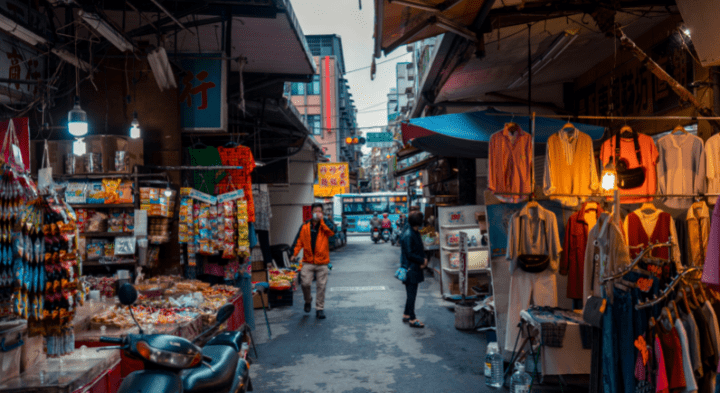When you’re in a new place you’re not quite familiar with, it can be difficult not to fall into travel scams and tourist traps with how easily they can target you. The best protection against them is being aware and vigilant of what is going on around you and knowing the most common types of cons out there so that you can avoid them.
We’ve mapped out today’s most common travel scams into three categories: Destination, Transportation, and Tourist Traps. See how you can successfully prevent each of these on your next trip.

Destination Scams
Free or Heavily Discounted Vacations
Any service offering a free or incredibly cheap vacation is almost always too good to be true. Often, these types of shams are set up to get you to pay a small fee or processing charge to start receiving your booking details, but after paying, the trip is never booked and the scammers walk away with your fee payment.
Additionally, watch out for discounted vacation packages that require you to attend timeshare presentations to get the low cost trip. While timeshares themselves are not inherently scams, getting buyers to lock down on a contract can sometimes be a sketchy process. These presentations can utilize high-pressure sales tactics on listeners while overselling the actual advantages of the property. If a business is offering you a surprising bargain on a trip in exchange for attending their timeshare presentation, know that their main goal is to get you to buy before leaving the room.
Free or Heavily Discounted Vacations
It can be tempting, but don’t immediately trust free Wi-Fi networks while you are in an unfamiliar place. These are frequently unsecured networks, and whether they have malicious intentions or not, they make it a lot easier for your information to be stolen by a third party. If you do choose to use free Wi-Fi in a public location, do not share sensitive or personal data, or type in bank or credit card information.
Callers to your hotel room or place of stay can also pose as the front desk or host, asking for credit card details to confirm your reservation. Never give away these secure details to a caller. Instead, choose to confirm with the front desk in person or call the hotel directly from a number you trust.
Money Swindling
A few very common tactics used to easily target tourists are the ‘bump and grab’, and the ‘spill’. These involve a thief accidentally jostling or spilling something on the victim. While you are preoccupied with regaining your balance or cleaning up the spill, the thief or their accomplices nearby may take the opportunity to pickpocket you. This can go unnoticed in a crowd when your attention is being pulled too many places at once. Keep your valuables safe and don’t leave wallets or phones in easily accessible pockets that you can’t keep an eye or hand on.
Another money swindling incident you could be subjected to is being given the wrong change when paying in cash. Cashiers can easily swap out big bills for smaller ones and claim you didn’t give enough, or slip smaller bills than you’re owed into your change. Stay familiar with the different bill types in the location you are in and always count your change back to avoid this.

Transportation Scams
Shuttle Snares
When on public transportation in an unfamiliar city, there are some things to look out for and keep in mind. On shuttles and trains, other passengers may offer to help stow your bags above or near your seat in an attempt to pull valuables out of the bag. Sleeping on public transport like this may also put you at risk of your luggage being stolen.
Keep a close eye and handle on your luggage and bags at all times, and be wary of your surroundings. One way to avoid the stress and risk of theft on a crowded bus is to opt for private transportation instead.
Taxi Tricks
Oftentimes, taxi drivers can take advantage of tourists by taking a longer route than necessary to drive up a meter that calculates a price based on the length of the ride.
If a taxi driver claims that their meter is broken when you get in the car, that may be a ploy to get you to pay a maximized cost that your route may not be worth. They may suggest this upfront or when you get to your destination, at which point you will likely be stuck paying an unreasonable price. Remove uncertainty and bypass taxi trips altogether when you book a black car ride, where you’ll always know the cost of your ride ahead of it.

Tourist Traps
Restaurant Ripoffs
There are plenty of signs to discern if a restaurant in a vacation spot is a tourist trap. If you are in a place where English is not the main language and the menu is completely in English, that may be your first clue. Another clue could be if the menu is absurdly long, trying to please any and every kind of traveler with overpriced options because of the convenience of the variety. These establishments will often not make everything fresh, and you are less likely to eat authentic cuisine true to the destination.
One more indication that a facility may be a tourist trap is if there is a food display in the window or outside used to lure tourists inside to eat. Generally, the best restaurants in a given area will never need to put on this kind of display to get customers because their reputation on its own will be strong enough to keep bringing people in.
Souvenir Scams
Quite a lot of souvenir shops are designed to make the most money possible off of the average tourist. If trinkets seem overly expensive and are not homemade or created by locals, the business is probably taking advantage of the location and overcharging for their goods. The selection you’ll see for mementos is also tell-tale. If a gift shop only has items in the same vein as the classic “I ❤️ NY” tourist shirt, you may want to continue your search for a more location-appropriate keepsake item.
Check the labels on items that seem to be marketed as locally made and sourced. What may seem to be a craft item only found in the area could easily be a mass-produced look alike item made to look like the real deal. Try to find local artisans and craftspeople to buy your souvenirs from, as these places will offer much more authentic pieces and help support local businesses in your destination.
Do Your Research
In order to dodge tourist traps in a new locale you are visiting, it is always recommended to do some research ahead of time and make a list of hidden gems you want to visit, and others you want to avoid.
As a general rule of thumb, the most notable sights and famous spots in any given city are bound to have the highest prices for food, shopping, and entertainment. If a place or landmark consistently appears in your social media feeds, it’s probably safe to say that this place will be heavily populated with tourists and is likely to have plenty of tourist traps nearby. One of the best ideas is to check in with a local, if possible. They can offer the best possible recommendations based on hard-won experience, versus sifting through online reviews and wondering which ones to take to heart.
Sometimes the best finds while traveling are well-kept secrets, far from the bustle of tourism. Choosing attractions a few streets away or more from the epicenter of traffic and tourism may help you find a more authentic cultural experience in the area. Book a car ride service ahead of time to ensure reliable and safe transportation to all the hidden treasures of your next destination.

